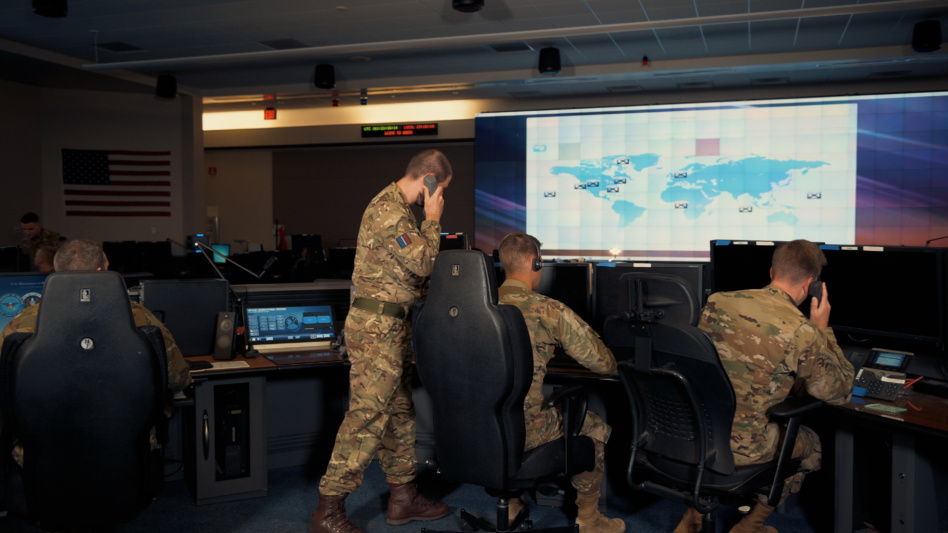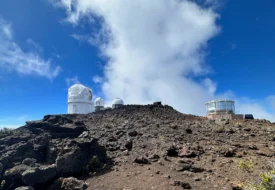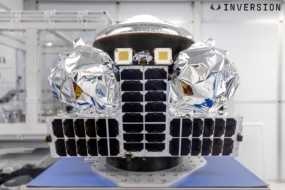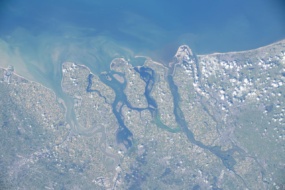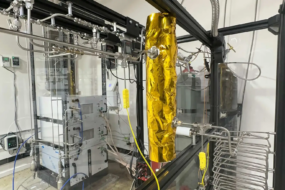If the Space Force is going to figure out how to get eyes on orbital bogies, it needs the most advanced software devs working on the challenge.
But there’s a problem: The military’s launch alert data is too highly-classified to hand over to a bunch of programmers in a start-up.
Enter Space Systems’s Command’s Space Domain Awareness Tools, Applications, and Processing Lab (SDA TAP Lab). The organization and its sister program, the Overhead Persistent Infrared TAP Lab, are government-run tech incubators, bringing together Guardians, private companies, and academic experts for three-month sprints to solve pressing challenges in tracking and characterizing threats to US forces.
Weather or not: For the launch alert problem, the TAP Lab looked to Greg Furlich, an SDA researcher at the University of Colorado Boulder’s Center for National Security Innovation. Building on research that shows weather satellites can spot rocket launches, he developed an algorithm that uses unclassified GOES data to spot launches around the world within minutes.
That information helps companies developing novel SDA sensors and software react in real-time to launches, giving DoD a demo of how they could identify potential threats without compromising secret data. The experience is leading to new contract opportunities for participants, and new technology for the Space Force—like a battle management software prototype for next year’s Victus Haze RPO mission.
“The commercial market is very important to space domain awareness, but it’s relatively small,” Maj. Sean Allen, who leads the SDA TAP Lab, told Payload. “The kind of competitive or collaborative engagements that stir innovation, there are very few opportunities…to foster collaboration between these different parts of our community, industry, academia, government, partners and allies.”
Uncorrelated tracks: At the SDA TAP Lab, which went into operation just a year ago, the focus has been on breaking down the “kill chain” for potential threats to US space assets: How do potential adversaries spot, track, target, and attack US space assets?
Over the course of several three-month sprints, companies have tackled a series of problems that figure into that equation. Kayhan Space, for example, developed software to determine if the weather in specific areas would allow for space launches—helping track potential direct-ascent anti-satellite weapons. After the tool was tested at the Lab, the Space Force adopted it into their operational suite.
“This partnership allowed Kayhan to contribute to the development of state-of-the-art solutions while benefiting from access to real-world datasets and feedback from operational users [and] helped Kayhan gain credibility as a trusted provider of mission-critical solutions in the military space domain,” Matthew Payne, a Kayhan Space software engineer embedded at the TAP Lab, told Payload in an email.
Tap dance: The TAP Lab ethos for R&D was the brainchild of Gen. Michael Guetlein, now the vice chief of the Space Force. While Guetlein was working on remote sensing in a previous job, he established the OPIR TAP Lab in 2016 to bring private sector expertise to bear on the US government’s collection of classified infrared missile-warning data.
“The anticipated proliferation of sensors that are going to orbit over the next 10 years opens up this whole new avenue and plethora of data,” Maj. Ana Clark, who leads the OPIR TAP Lab, said.
The OPIR TAP Lab’s primary objective is dealing with the growing threat of missiles in future conflict. Clark’s team focuses on reducing cognitive overload for Guardians monitoring missile warning systems.
“How do we, as the OPIR TAP lab, give that work to a, say, virtual operator who can sort through and take out maybe the pieces that are low priority or low value targets, and let the operator focus on the things that are high value, high priority, no fail?” Clark asks.
Outside in: That means advanced data fusion, software processing, and machine learning. One notable product from the OPIR TAP Lab is a collection of unclassified, synthetic data that allows companies to develop useful algorithms without accessing the actual secret reports from US military satellites.
Outside Analytics, a company that builds open software platforms to process sensor data, has participated in the OPIR TAP Lab since 2020. Last month, it won a $25M task order to deploy its platform to allow nearly 40 participants in the lab to access classified data, deploy their software, and present their results to operators.
“TAP Lab has done an amazing job of bridging the Valley of Death in R&D,” Outside Analytics CEO Ben Tarr said, referring to the often-seen gap between funding for research and funding to commercialize a product. “A big part of what comes out of TAP Lab is, how are we transitioning and operationalizing all that technology?
